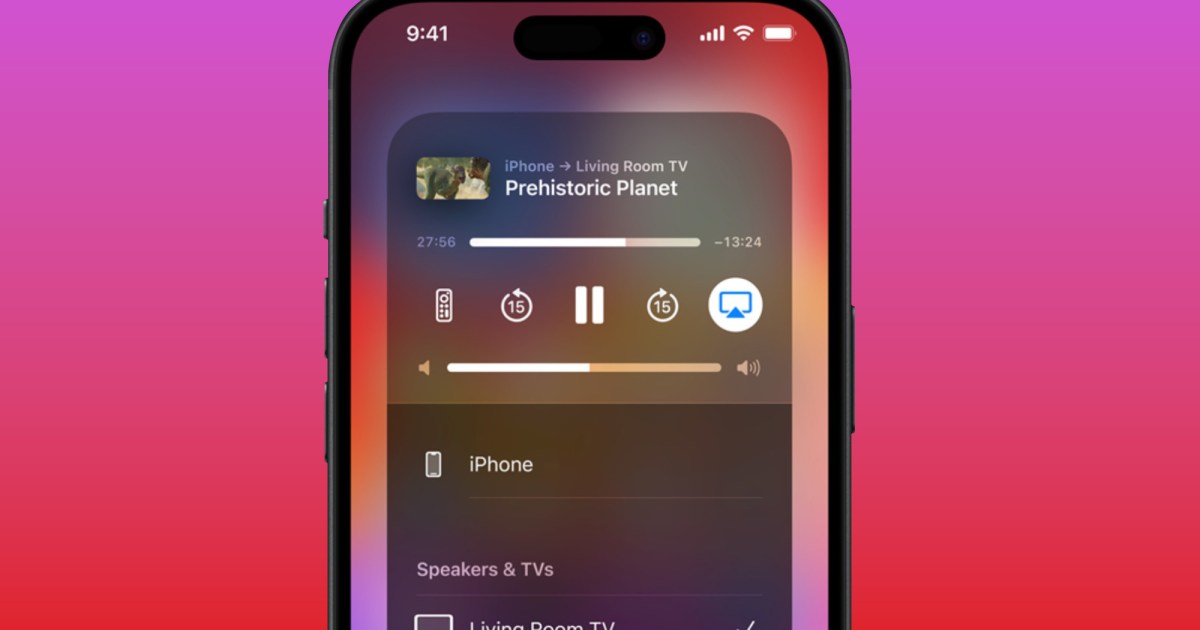Apple has consistently prioritized user safety and seamless functionality in its feature development. A prime example of this is AirPlay, a wireless protocol designed to enable users to stream audio and video between devices smoothly.
### Functionality Across Devices
AirPlay is not restricted to Apple products; it can also connect with TVs and speakers certified by Apple for wireless streaming. However, this accessibility has made it an attractive target for cybercriminals, as vulnerabilities exist within the protocol that could facilitate malware distribution, potentially leading to the compromise of numerous connected devices.
### Understanding Vulnerabilities in AirPlay
Researchers at the cybersecurity firm Oligo have identified a series of flaws, referred to as Airborne, affecting Apple’s AirPlay Protocol and the Software Development Kit (SDK). These vulnerabilities allow hackers to remotely execute code, thereby gaining control of AirPlay-capable devices and potentially leveraging them to spread malware across local networks.
Oligo has noted, “An attacker can take over certain AirPlay-enabled devices and deploy malware that spreads to any device on the same local network.” Given the existence of billions of Apple devices and millions of third-party devices that support AirPlay, the implications of these vulnerabilities are substantial.
### Potential Risks Associated with Exploitation
One vulnerability could enable malicious actors to infiltrate a device, subsequently granting them entry to larger networks and targeting additional devices. The fallout from such attacks can range from eavesdropping on conversations to tracking personal vehicles, acquiring sensitive data, conducting ransomware attacks, or initiating denial-of-service attacks.
### Apple’s Response to Security Flaws
Apple addressed these vulnerabilities through various software updates, including macOS Sequoia 15.4, tvOS 18.4, macOS Ventura 13.7.5, iPadOS 17.7.6, macOS Sonoma 14.7.5, iOS 18.4, and iPadOS 18.4, in addition to visionOS 2.4. Nonetheless, a significant number of older devices may remain unpatched, leaving them susceptible to exploitation.
### Expert Recommendations for User Safety
To protect devices that may be vulnerable, experts recommend that users should apply the software patches provided by Apple. However, Trevor Horwitz, CISO and founder of TrustNet, emphasizes that the mere availability of a patch is insufficient; users must actively install it.
He suggests, “The simplest and most effective thing you can do is keep your devices updated, which sounds basic but is often overlooked.” For iPhone or iPad users, the update path is: Settings > General > Software Update. For macOS users, the process involves navigating to: Apple menu > System Settings > General > Software Update.
### Managing Network Security
Because exploits like Airborne leverage local Wi-Fi networks for propagation, users should also enhance their network security. Oleh Kulchytskyi, Senior Malware Reverse Engineer at MacPaw’s Moonlock, highlights that Zero-Click Remote Code Execution (RCE) poses a significant security risk.
“To stay safe at home, ensure your router has a strong password and no suspicious devices are connected to your network,” Kulchytskyi advises.
### Implementing Basic Digital Security Protocols
Matthias Frielingsdorf, an experienced iOS researcher and cofounder of iVerify, suggests following fundamental digital security protocols, which include promptly installing updates, using strong passwords, and minimizing potential attack surfaces.
Given that AirPlay is a potential threat vector, users should adopt proactive measures. “Disabling AirPlay on devices that aren’t needed as receivers can help limit attack vectors. When in public spaces, turning off Wi-Fi on your Mac and iPhone can thwart certain attacks,” Frielingsdorf notes.
### Disabling AirPlay Features
By default, AirPlay streaming is enabled, thus users should consider disabling it if not in use. For iPhones or iPads, navigate to: Settings > General > AirPlay & Continuity > Ask or set it to Never if the feature is not actively utilized. Setting a password for AirPlay access is also recommended.
Users can also entirely disable AirPlay by going to: AirPlay & Continuity and toggling off the AirPlay Receiver option. Alternatively, users may allow AirPlay only for the Current User to restrict access.
For Mac users, the process is: Apple Menu > System Settings > General > AirDrop & Handoff > AirPlay Receiver. As not all devices can receive updates, ensuring that currently owned devices have adequate security settings is prudent.
### Conclusion
Throughout history, cybersecurity experts have underscored vulnerabilities in wireless communication systems like Bluetooth. However, the presence of a zero-click remote code execution vulnerability within AirPlay serves as a stark reminder.
Although Apple’s security measures are robust, they are not infallible. “What makes this serious is the integration. AirPlay is a system-level service embedded in iOS, macOS, and tvOS. A compromise at this level could impact multiple devices simultaneously,” warns Trevor Horwitz from TrustNet.
For users who may not be well-versed in security measures, understanding the broader threat landscape is crucial. Chris Hill, Chief Security Strategist at BeyondTrust, states, “Threat actors will seize the path of least resistance, and in this instance, they found it with AirPlay and Airborne.” Ultimately, users must keep devices updated, disable unnecessary features, and remain vigilant with their network settings.




